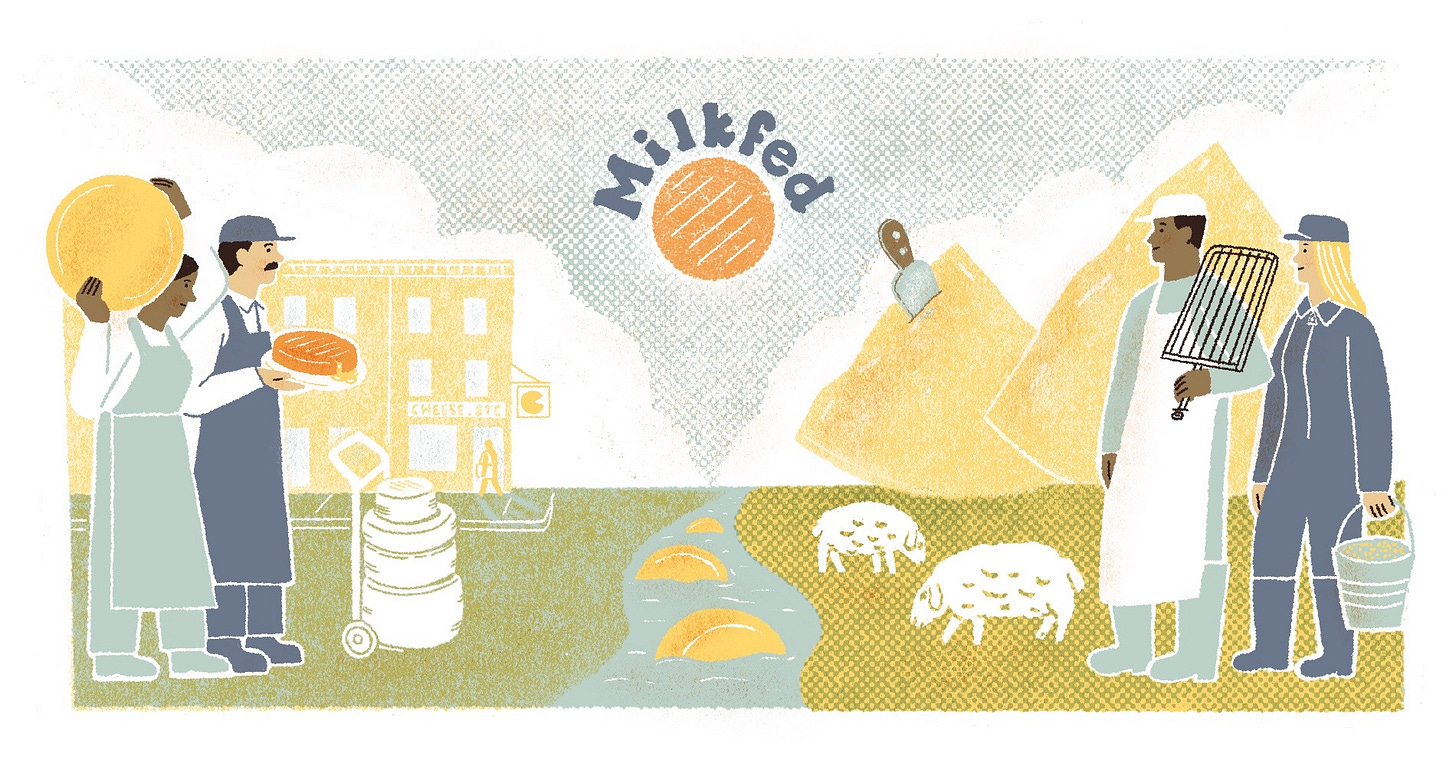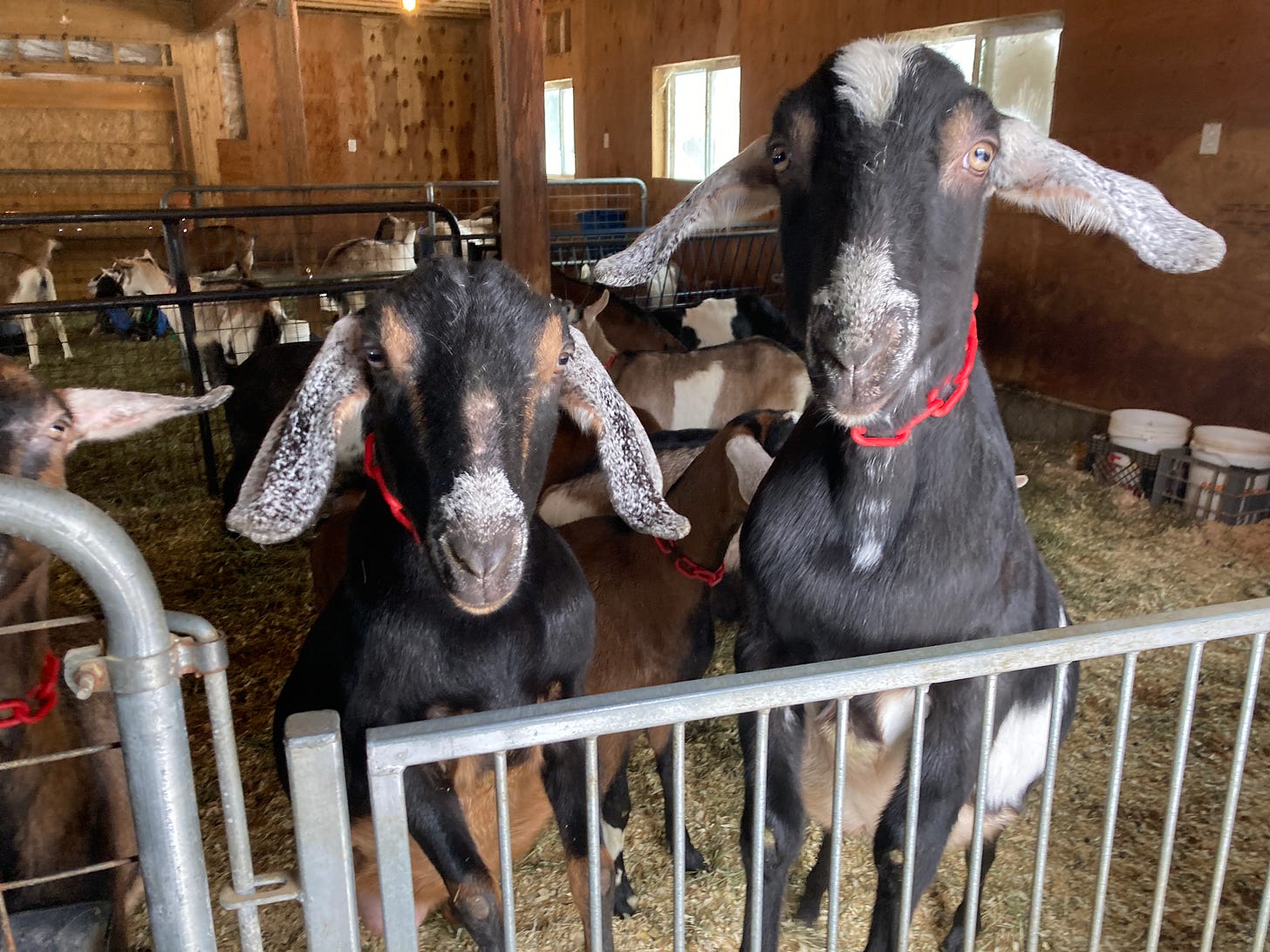
I planned to send out the following newsletter last week—before the LA fires destroyed the town and the home where my dad and grandmother grew up. I’m working on a piece about that to publish later this week, but in the meantime, you can donate to Mask Bloc LA to get respirators to Angelenos who need them, donate to support Altadena’s Black community here, or pick literally any of the dozens of individual GoFundMes and on-the-ground mutual aid projects you’re probably seeing on social media and give what you can.
I try to temper my expectations for the new year. I’ve learned over a couple of decades of adulthood that expecting sweeping self-improvements and 180-degree turnarounds in my habits is just setting myself up to fail. Aside from the occasional break from cannabis or social media, I try to ring in the new with as little fanfare and as much rest as I can get—a slow, soft landing into January.
This year is different. The past two-ish weeks have been full of new habits and new activities. On January 2, I packed my Subaru and drove north from my home in Philly to Villa Villekulla, a one-woman goat farm nestled up a wooded hillside in central Vermont. For the next two and a half months, I’ll be living in a cozy little apartment above the creamery, helping out with goat care, milking cleanup, and other farm chores.
I’ve followed proprietress/crimson-haired goat witch Lauren Gitlin via Instagram and her excellent newsletter (she was a journalist in another life) for a couple of years. I even interviewed her for my DZRA project in 2023, intrigued by her uncommon approach to producing ethical dairy. When I saw Lauren post that she was looking for an apprentice for the first three months of 2025, I jumped at the chance.
Unlike many folks who work in ag-adjacent roles, I never got the chance to go WOOFing or work on a farm back when I was a rootless, carefree twentysomething with boundless energy and supple joints. I wanted that experience. After discussing it with my partner, who is generously holding down the fort and caring for our two cats back home, I sent her an email.
Villa Villekulla’s motto is “handmade skyr from hand-hugged goats,” and Lauren does everything in her power to live up to that promise. She runs a no-kill operation, meaning she refuses to process her animals for meat or sell them to buyers who will. If you know anything about dairying, you understand the economic and operational challenge that presents: milk requires pregnancies (though maybe not as many as it used to), and pregnancies result in babies. Sometimes those babies are boys who, not producing milk, represent a drain on the operation’s resources. It’s the kind of cold, hard biological and economic fact that’s at the core of dairy farming—something that’s less difficult to accept when practiced on a small, human scale but makes you queasy when it’s extrapolated to the nearly $900 million global dairy industry.
This is why we have veal and lamb and cabrito, and why humanely raised rose veal has made a comeback thanks to small-scale dairy operations. The economics of dairying—and the potential danger to animals and people in keeping intact male animals on the farm through adulthood—mean that farmers can’t feed mouths who don’t yield product. Bucking this convention makes an already difficult line of work even more challenging.
For the next several weeks, my days will begin at 5 so I can wake up enough to start barn chores at 6. I’ll feed and water the kids, empty and fill water buckets in the main, distribute the rust-colored blend of dried kelp and powdered molasses and minerals that supplement the animals’ salad course of dry hay. Then I’ll thaw out with a coffee in my little studio above the creamery and do my actual job, which I’ll still be performing remotely (self-employment has its perks).
Depending on the day, I’ll put in a little time in the steamy milk room to meticulously rinse, scrub, and rinse again milk cans and gaskets and tubes. Various barns must be mucked several times a week—by far the most physically taxing task, which involves forking or shoveling heaps of pee and poop-soaked wood shavings and hay. I might spend some time in the packing room getting jars of goat skyr ready for sale (you can find this thick, silky, thistle rennet-cultured product at better indie grocers, cheese shops, and co-ops around the Northeast).
I’ve spent the past week and a half learning the ropes, getting settled in, and recalibrating my cooking, eating, sleep, and rest habits to adjust to this level of physical activity. Farm work is tough on the body, but as someone who thinks and taps on a keyboard for a living, it feels energizing to do physical work outside for a few hours each day (temporarily). It’s given me an even greater appreciation for the work farmers and farm workers do.
During my wintry adventure, I want to spend more time with y’all in this space, too. My goal is to develop some kind of regular cadence and try out different types of posts, so you’ll see me experimenting with those in the coming weeks. Don’t hesitate to hit reply, drop a comment, or leave a Substack Note. If what I write strikes a chord with you, please spread the word! I’m excited to cultivate more community here, especially as I’m away from my IRL community for the next few months.
If you’re a cheesemaker, dairy farmer, or other cheese pro in or around central Vermont, please hit me up—I’d love to pay your creamery a visit or meet up for a coffee. And since I’ll be in the area, I’m planning to attend the Science and Craft of Raw Milk Cheese conference in March. Maybe I’ll see you there?
And don’t worry, I’ll be posting plenty of goat pics—like these li’l goofballs:









Oh wow, this is bringing a zing to my otherwise-bland January Monday morning. Thank you for that!
I’m curious about knowing more about the male goats. Is there a “job” for them, ie chewing up kudzu, being ogled by humans (although I suspect as they mature this might not work out)?
Perhaps a post about male goats?
Thanks!
LOVE this for you! Keep it coming, can’t wait to learn more as you do.